This site uses cookies, by continuing to use this site you are agreeing to their use. Learn More
brixton & wapping police station
This site uses cookies, by continuing to use this site you are agreeing to their use. Learn More
brixton & wapping police station
| Click on the thumbnails to get a larger picture, then on |
|
on the top LHS of the screen to return to this page. |
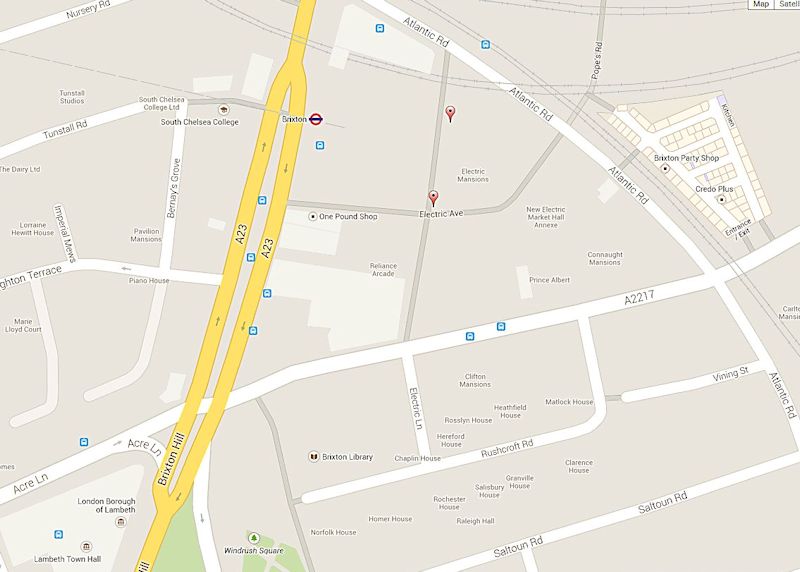
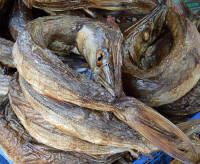 Baby baracuda |
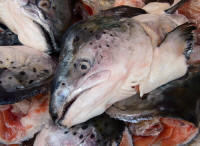 Salmon heads |
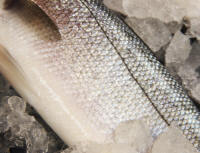 Sheen on the scales |
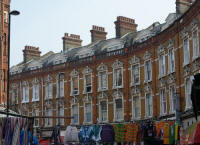 Crescent |
|||
 Egg plants |
 A handsome vegetable, no idea what it is perhaps a gourd |
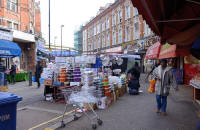 Brixton Market |
 Red snappers |
|||
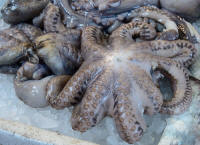
Octopi or octopuses & catfish |
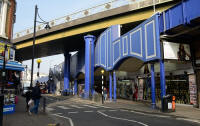 Blue arches in Atlantic Road |
 Graffiti |
||||
 3rd Avenue |
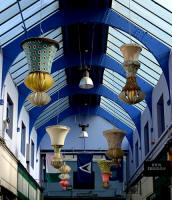 2nd Avenue |
 2nd Avenue in Brixton Village |
||||
 Bella West |
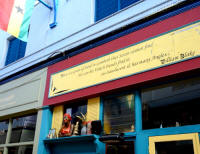 Quotation by William Blake |
|
||||
 Reflections in a bottle |
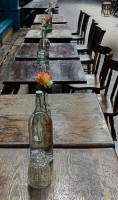 Row of tables |
 Cardboard Pillar |
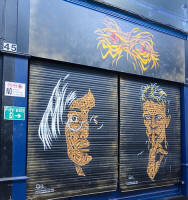 Graffiti |
|||
 |
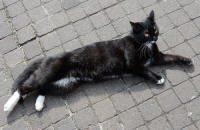 Charley the resident cat of Brixton Market |
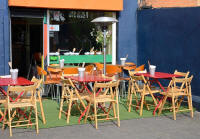 |
 |
|||
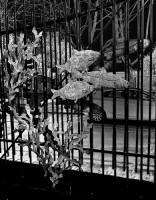 Fishy Gates |
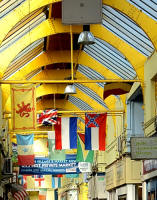 Brixton Market |
 Ropey Roman Arches |
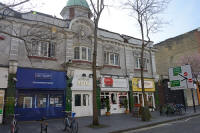 Hotel |
|||
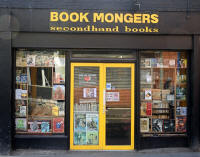 Book dealer |

|
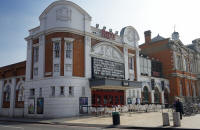 Ritzy |
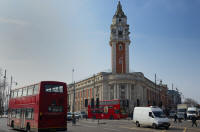 Lambeth Town Hall so fine |
|||
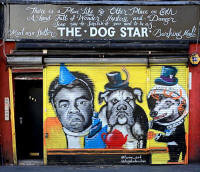 The Dog Star Sirius? |
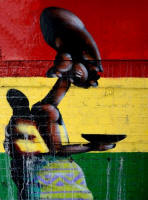 African mother and child |
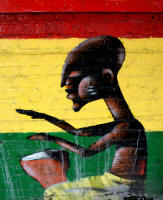 African |
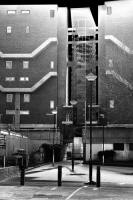 Modern housing |
|||
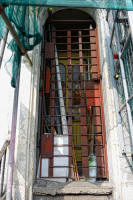 |
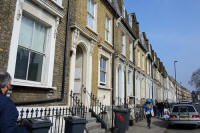 The derelict house on the left was the first in the row above |
 |
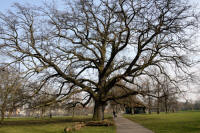 Venerable tree |
|||
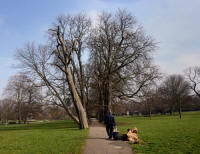 Walking through the avenue |
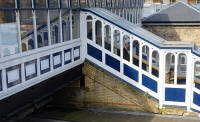 Covered Stairway |
 Denmark Hill (Overground) |
 Wide range of styles and sizes. We travelled to Wapping |
|||
|
||||||
 We had lunch at the Captain Kidd |
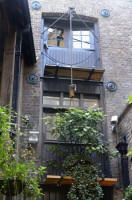 The noose |
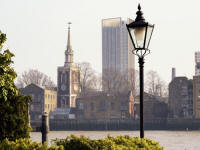 From the pub garden |
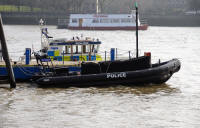 Police boats on arrival |
|||
|
VISIT TO THE THAMES RIVER POLICE MUSEUM - a report of the visit Hidden away in a corner of Wapping High Street, on the riverbank, is a police station. Few people, standing outside and looking at this unassuming building, would realise that this is here the “Met” began, even before the setting up of the Bow Street Runners or Sir Robert Peel‘s “peelers”. It is now the Marine Police Unit. In 1798 the Thames was full of ships unloading their wares from all over the world. Unfortunately this attracted criminals whose pilfering of ships’ cargoes was costing the owners an annual loss of £500,000 and a subsequent loss of import dues. Pilfering was regarded by the Master Lumpers, who discharged or loaded the cargoes, as a perk of the job - not stealing. In 1797 John Harriott, an Essex JP, farmer and inventor came up with a plan to protect the river by policing, but it took Patrick Colquhoun, the principal magistrate of Queens Square Police Office, Westminster to persuade the West India Merchants and West India Planters Committee to finance the first preventative policing of the central shipping of the Thames for a year. When the first patrol set out from their base at Wapping High Street they patrolled in rowing galleys. Each was manned by a “Surveyor” (Inspector) and up to three Constables. In addition, the companies hired several hundred part-time Ship Guards to oversee loading and unloading of cargoes. To establish and equip this new police force cost £4,200. Within six months they had saved more than 25 times that amount of cargo and were so effective that the criminal fraternity organised a riot. A large crowd descended on the Police Station with the aim of burning it down with the two magistrates Harriott and Colquhoun inside. The riot was dispersed before this could be achieved but resulted in the death of Gabriel Franks who was shot. His death was the first recorded of a policeman. In 1800 Parliament passed the Marine Police Bill which moved the small river police from the private to the public domain. Also in 1800 Patrick Colquhoun wrote The Commerce and Policing of the River, a book which gave rise to other police forces around the world. By the time the Metropolitan Police was formed in 1829, the Marine Police had three stations – the HQ at Wapping, the others on board two old navy vessels at Waterloo and Blackwall. Six hour patrols began at two hourly intervals day and night. Rowing galleys were used between Battersea and Woolwich, with the river’s lower reaches patrolled by a sailing cutter. In 1839 the Marine Police became the Thames Division of the Metropolitan Police and for the next 40 years policed the river by road and sail. In the 1880s it acquired its first power launch and by 1910 nearly all patrol boats were power-driven. Two new stations at Erith and Barnes were opened. The floating pontoon at Waterloo Pier, still there today, replaced the navy hulk. Today 54 miles of London’s river, from Staines to the Thames Barrier, are patrolled from bases at Wapping, Waterloo Pier and Shepperton, with strategic moorings at Richmond and Teddington. The Museum is located in what was once the carpenter’s workshop. Exhibits include uniforms and documents, which trace the history of the Thames River Police. There is also a fine collection of the every day “Hardware” of policing from handcuffs to cutlasses. Robert Jeffries, the present curator and a retired river policeman, gave us a fascinating talk, starting with the foundation of the river police, through the Ratcliffe murders, the Princess Alice disaster to the present day and the Marchioness disaster, and much more besides. We could then wander round the Museum and look at the exhibits with no interactive devices to be seen! Today the officers of Thames Division are still protecting and serving all who live, work or play on London’s river. If you want to know more visit www.thamespolicemuseum.org.uk |
||||||
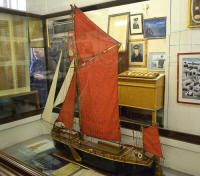 Thames Barge |
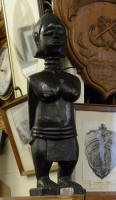 Ethnic woman |
 Pistol |
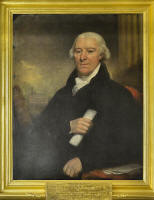 Patrick Colquhoun above John Harriot below |
|||
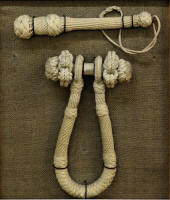 |
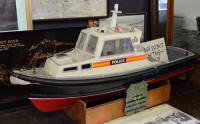 Police boat |
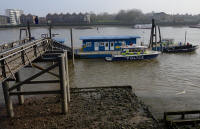 Lower tide |
||||
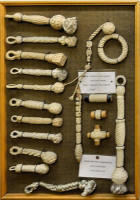 Knots |
 Knots |
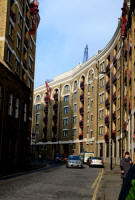 Warehouses by the museum |
We were a bit late catching the train, but had an easy journey back home. | |||